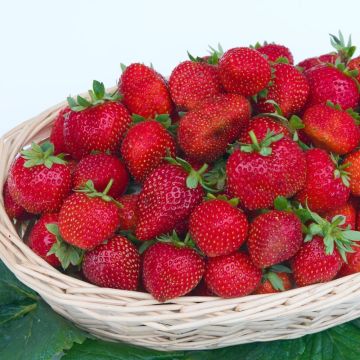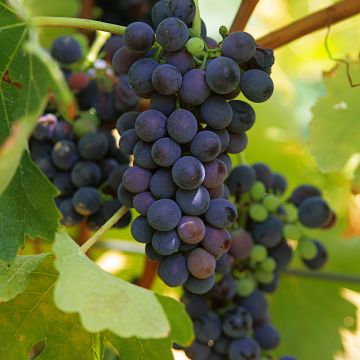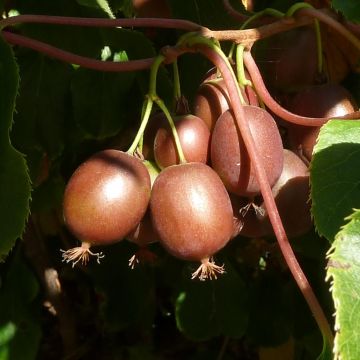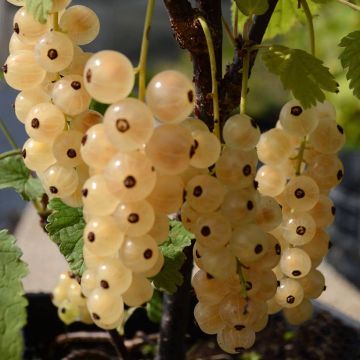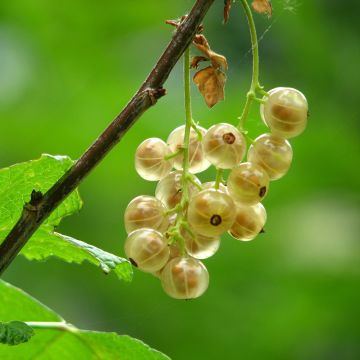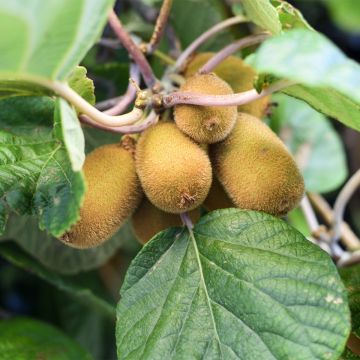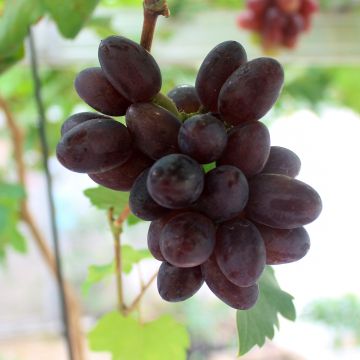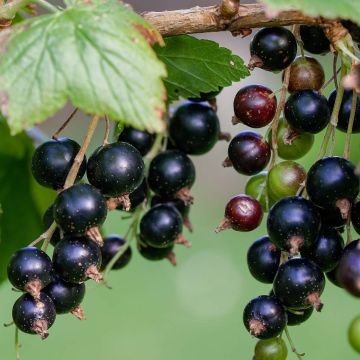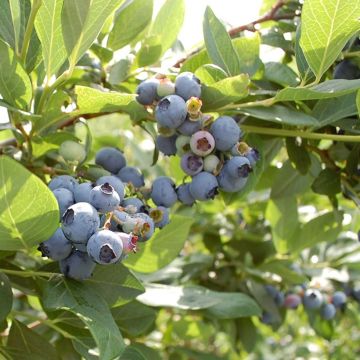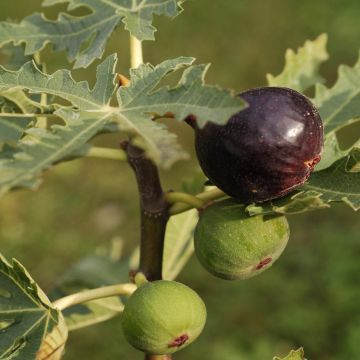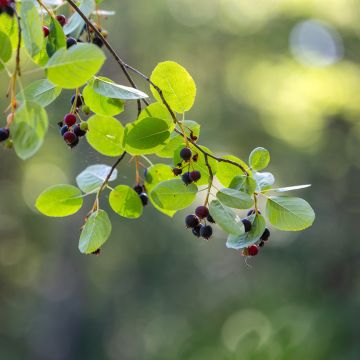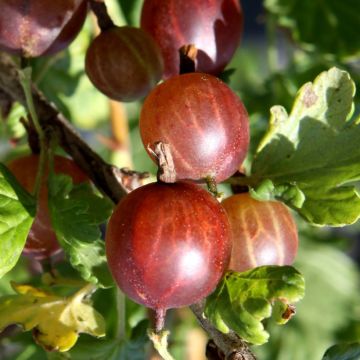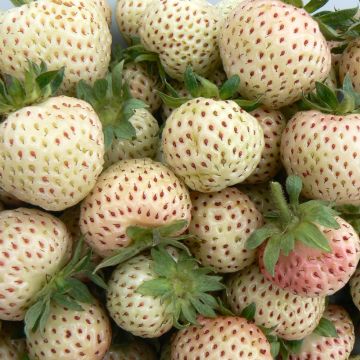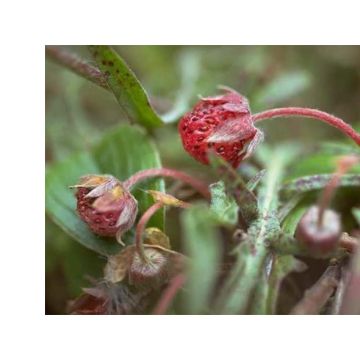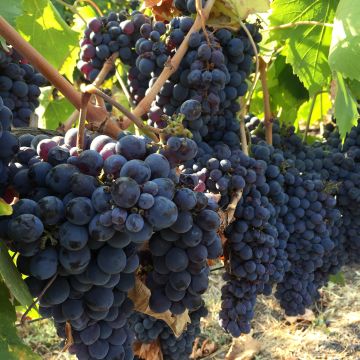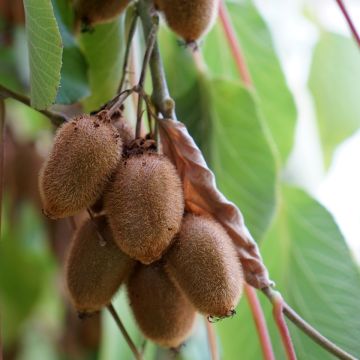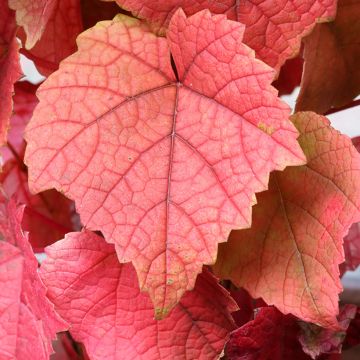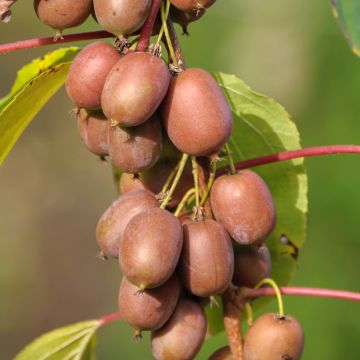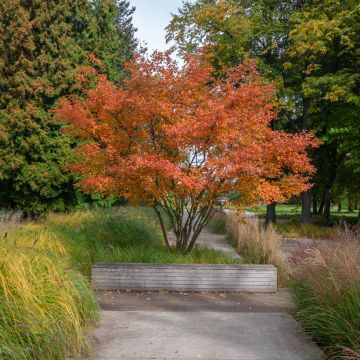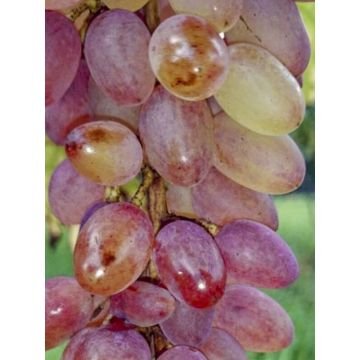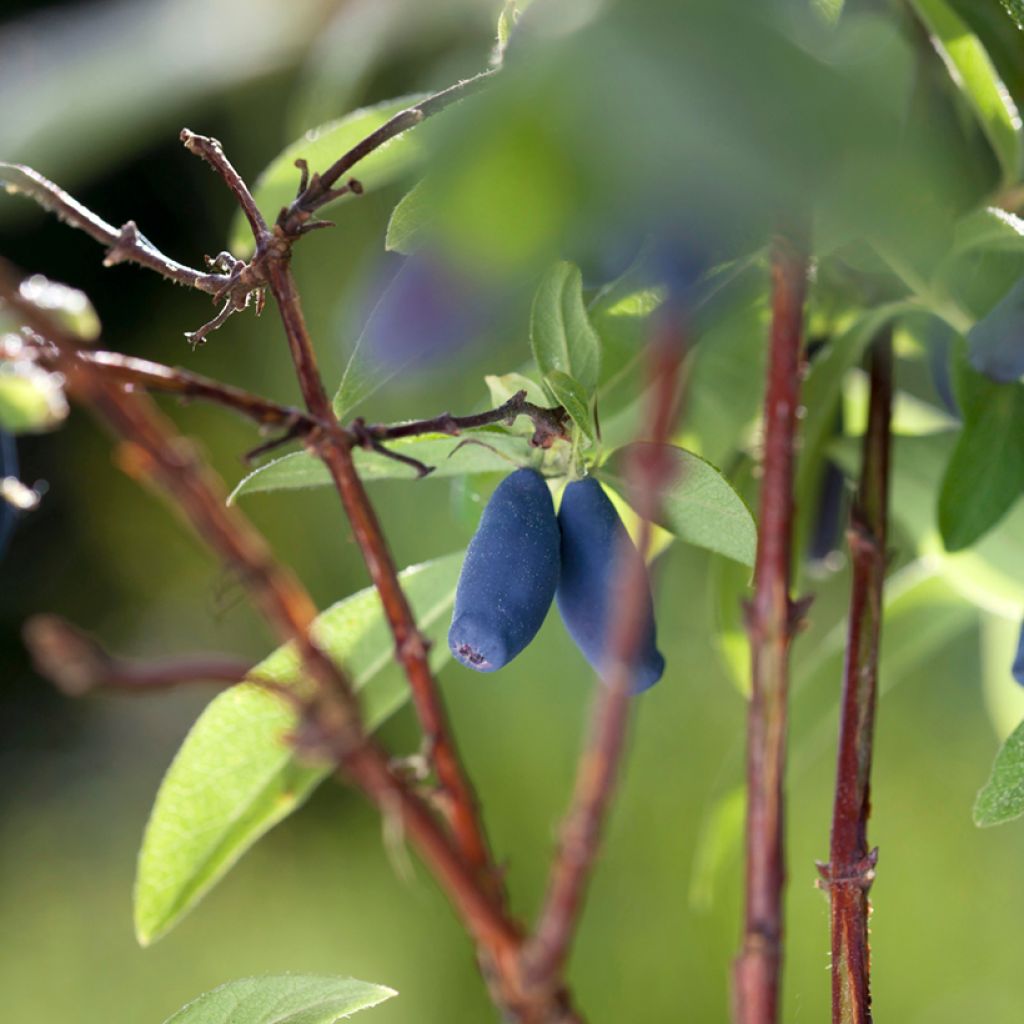

Lonicera caerulea Boreal Beauty - Honeyberry
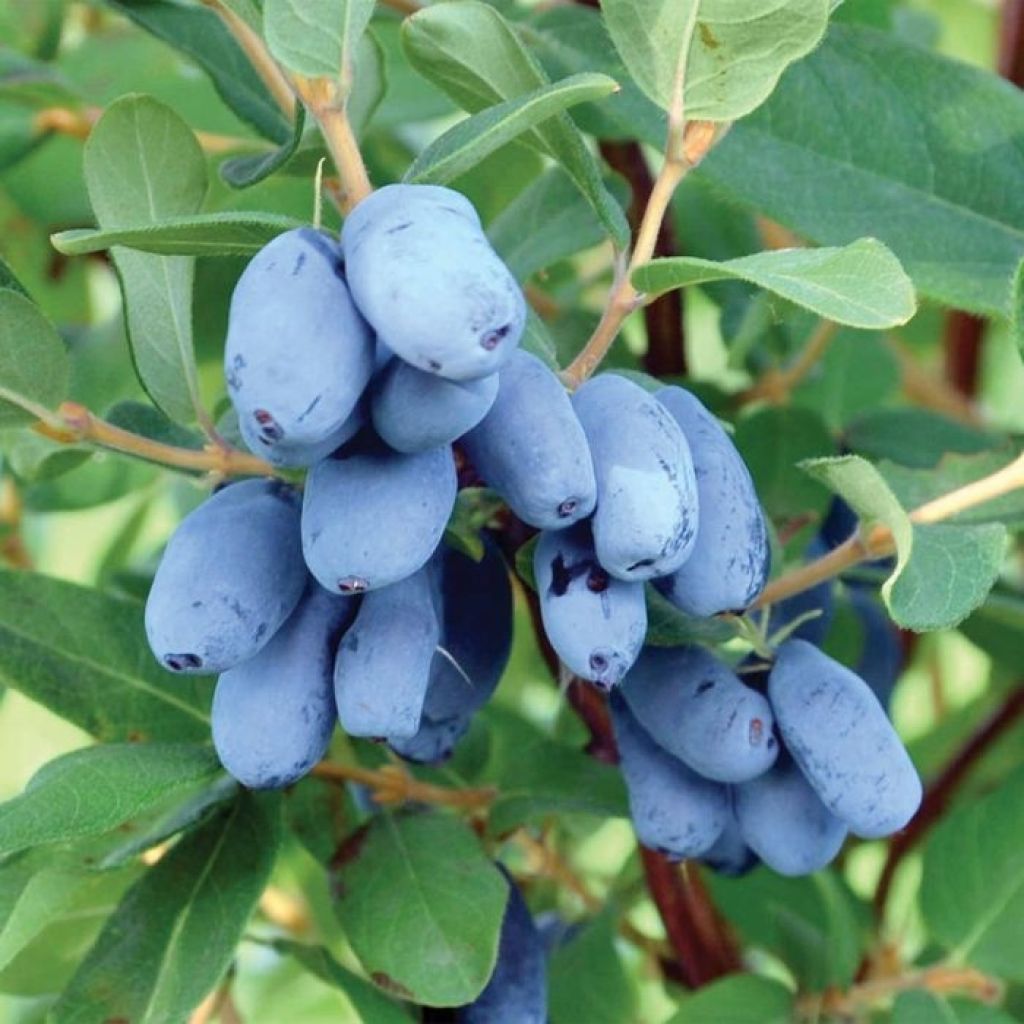

Lonicera caerulea Boreal Beauty - Honeyberry
Lonicera caerulea Boreal Beauty - Honeyberry
Lonicera caerulea var. kamtschatica Boreal Beauty
Blue Honeysuckle, Honeyberry, Sweetberry Honeysuckle, Haskap
Beautiful plant
Antoine , 06/03/2024
This item cannot be shipped to the selected country
Delivery charge from €5.90
Delivery to Corse prohibited
More information
Schedule delivery date,
and select date in basket
This plant carries a 24 months recovery warranty
More information
We guarantee the quality of our plants for a full growing cycle, and will replace at our expense any plant that fails to recover under normal climatic and planting conditions.
From €5.90 for pickup delivery and €6.90 for home delivery
Express home delivery from €8.90.
Delivery to Corse prohibited: UE law prohibits the import of this plant from mainland France to Corse as part of the fight against Xylella fastidiosa. Please accept our sincere apologies.
More information

Does this plant fit my garden?
Set up your Plantfit profile →
Description
Lonicera caerulea 'Boreal Beauty' is a shrub honeysuckle that produces delicious blue coloured berries reminiscent of blueberries. Upright and productive, it can easily be incorporated into a small hedge or planted along the edge of your orchard to enjoy its vitamin-rich fruits in early summer. It prefers a moist, acidic to neutral soil.
Originally from the cold regions of the Far East, from Siberia to Japan, the blue honeysuckle is an extremely hardy small shrub that can withstand temperatures below -30°C (-22 °F). Just like its climbing realtives, it belongs to the Caprifoliaceae family. The small oval leaves, arranged in an opposite pattern on the branches, start off as tender green and then turn slightly grey-green. The cinnamon-brown bark becomes highly decorative after a few years. In early spring, elongated green-yellowish flowers appear, resembling those of the climbing honeysuckles but in miniature. A few weeks later, between May and July, the flowers give way to succulent blue berries with a powdery bloom, tasting somewhat like American blueberries. These fruits are very rich in vitamins B and C, as well as antioxidants, and can be used fresh, in jams, and in sweet preparations...
The 'Boreal Beauty' variety, bred in Canada in 2018, stands out for its late harvest, taking place between late June and July, which extends the "Sweetberry" season (see other varieties). The fruits are quite elongated, medium to large in size, and weigh on average between 2 and 3.5 g. They are firm and very easy to pick as they do not fall off the plant by themselves. The bush is upright, vigorous, and resistant to powdery mildew. It reaches a height of about 1.80 m (5 ft 11 in) and a width of 1.20 m (3 ft 11 in), with relatively fast growth.
Very robust, Lonicera caerulea 'Boreal Beauty' is undemanding: it can tolerate most soils as long as they are neither chalky nor too dry. However, a humus-rich, and well-draining soil will promote a significant and regular harvest, as well as high-quality fruits. Planting several staggered varieties will improve cross-pollination and maximize yield over a long period (see other varieties). The young shoots are highly resistant to late frosts, which is an advantageous when planting in cold climates. You can incorporate it into a rustic hedge, provided that neighbouring shrubs do not invade it too muc as this would hinder its development and make harvesting difficult. It also grows very well in pots. The annual addition of compost will prove beneficial for this plant, whether planted in the ground or in a pot.
Report an error about the product description
Lonicera caerulea Boreal Beauty - Honeyberry in pictures
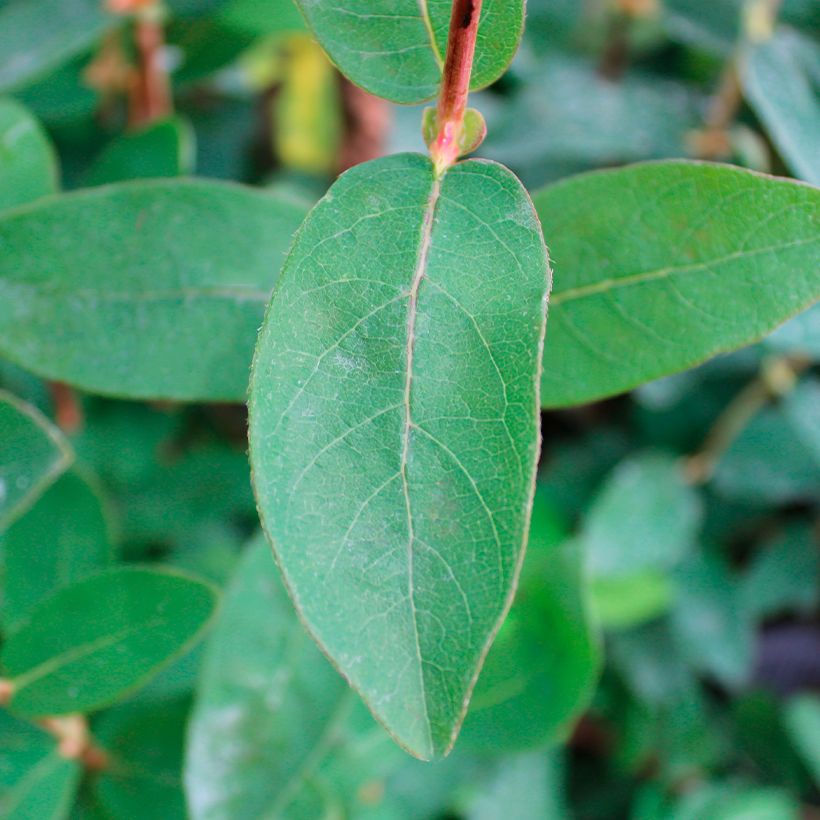

Plant habit
Flowering
Foliage
Botanical data
Lonicera
caerulea var. kamtschatica
Boreal Beauty
Caprifoliaceae
Blue Honeysuckle, Honeyberry, Sweetberry Honeysuckle, Haskap
Cultivar or hybrid
Other Berries A to Z
Planting and care
Plant Lonicera caerulea preferably in spring in a deep, moist, rich, and moderately well-drained soil, with an optimum pH of 5 to 7, in a sunny location, or slightly shaded in hot climates. It is suited to a wide range of soil textures, ranging from sandy to clay soils, but prefers soils rich in organic matter, which remain moist during the summer. It struggles in shallow and dry soils. Additional compost is necessary at planting and once a year. Water regularly (preferably with non-calcareous water) and mulch the soil to maintain freshness. After three years, prune to balance the branches and remove dead, weak, or diseased wood.
Harvest: The fruits are harvested in late spring, early summer. The berries turn blue and waxy, make sure the flesh is a deep red colour. If it is green, the fruits are not ripe enough. After 2 or 3 years of cultivation under good conditions, you can harvest over 6 kg of berries per bush.
Planting period
Intended location
Care
-
, onOrder confirmed
Reply from on Promesse de fleurs
Berries
Haven't found what you were looking for?
Hardiness is the lowest winter temperature a plant can endure without suffering serious damage or even dying. However, hardiness is affected by location (a sheltered area, such as a patio), protection (winter cover) and soil type (hardiness is improved by well-drained soil).

Photo Sharing Terms & Conditions
In order to encourage gardeners to interact and share their experiences, Promesse de fleurs offers various media enabling content to be uploaded onto its Site - in particular via the ‘Photo sharing’ module.
The User agrees to refrain from:
- Posting any content that is illegal, prejudicial, insulting, racist, inciteful to hatred, revisionist, contrary to public decency, that infringes on privacy or on the privacy rights of third parties, in particular the publicity rights of persons and goods, intellectual property rights, or the right to privacy.
- Submitting content on behalf of a third party;
- Impersonate the identity of a third party and/or publish any personal information about a third party;
In general, the User undertakes to refrain from any unethical behaviour.
All Content (in particular text, comments, files, images, photos, videos, creative works, etc.), which may be subject to property or intellectual property rights, image or other private rights, shall remain the property of the User, subject to the limited rights granted by the terms of the licence granted by Promesse de fleurs as stated below. Users are at liberty to publish or not to publish such Content on the Site, notably via the ‘Photo Sharing’ facility, and accept that this Content shall be made public and freely accessible, notably on the Internet.
Users further acknowledge, undertake to have ,and guarantee that they hold all necessary rights and permissions to publish such material on the Site, in particular with regard to the legislation in force pertaining to any privacy, property, intellectual property, image, or contractual rights, or rights of any other nature. By publishing such Content on the Site, Users acknowledge accepting full liability as publishers of the Content within the meaning of the law, and grant Promesse de fleurs, free of charge, an inclusive, worldwide licence for the said Content for the entire duration of its publication, including all reproduction, representation, up/downloading, displaying, performing, transmission, and storage rights.
Users also grant permission for their name to be linked to the Content and accept that this link may not always be made available.
By engaging in posting material, Users consent to their Content becoming automatically accessible on the Internet, in particular on other sites and/or blogs and/or web pages of the Promesse de fleurs site, including in particular social pages and the Promesse de fleurs catalogue.
Users may secure the removal of entrusted content free of charge by issuing a simple request via our contact form.
The flowering period indicated on our website applies to countries and regions located in USDA zone 8 (France, the United Kingdom, Ireland, the Netherlands, etc.)
It will vary according to where you live:
- In zones 9 to 10 (Italy, Spain, Greece, etc.), flowering will occur about 2 to 4 weeks earlier.
- In zones 6 to 7 (Germany, Poland, Slovenia, and lower mountainous regions), flowering will be delayed by 2 to 3 weeks.
- In zone 5 (Central Europe, Scandinavia), blooming will be delayed by 3 to 5 weeks.
In temperate climates, pruning of spring-flowering shrubs (forsythia, spireas, etc.) should be done just after flowering.
Pruning of summer-flowering shrubs (Indian Lilac, Perovskia, etc.) can be done in winter or spring.
In cold regions as well as with frost-sensitive plants, avoid pruning too early when severe frosts may still occur.
The planting period indicated on our website applies to countries and regions located in USDA zone 8 (France, United Kingdom, Ireland, Netherlands).
It will vary according to where you live:
- In Mediterranean zones (Marseille, Madrid, Milan, etc.), autumn and winter are the best planting periods.
- In continental zones (Strasbourg, Munich, Vienna, etc.), delay planting by 2 to 3 weeks in spring and bring it forward by 2 to 4 weeks in autumn.
- In mountainous regions (the Alps, Pyrenees, Carpathians, etc.), it is best to plant in late spring (May-June) or late summer (August-September).
The harvesting period indicated on our website applies to countries and regions in USDA zone 8 (France, England, Ireland, the Netherlands).
In colder areas (Scandinavia, Poland, Austria...) fruit and vegetable harvests are likely to be delayed by 3-4 weeks.
In warmer areas (Italy, Spain, Greece, etc.), harvesting will probably take place earlier, depending on weather conditions.
The sowing periods indicated on our website apply to countries and regions within USDA Zone 8 (France, UK, Ireland, Netherlands).
In colder areas (Scandinavia, Poland, Austria...), delay any outdoor sowing by 3-4 weeks, or sow under glass.
In warmer climes (Italy, Spain, Greece, etc.), bring outdoor sowing forward by a few weeks.

































